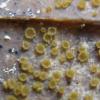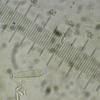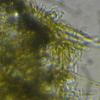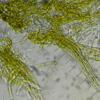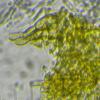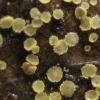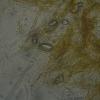
22-12-2025 00:47
Patrice TANCHAUDBonsoir, récolte à proximité du milieu dunaire

21-12-2025 21:32
Pol DebaenstHello, Garden, Burgweg 19, Veurne, BelgiumOn 10/1

21-12-2025 21:40
Isabelle CharissouBonjour, j'aimerais connaitre les références de

21-12-2025 21:31
Pol DebaenstHello, Garden, Burgweg 19, Veurne, BelgiumOn 10/1

21-12-2025 21:31
Pol DebaenstHello, Garden, Burgweg 19, Veurne, BelgiumOn 10/1

20-12-2025 23:08
Patrice TANCHAUDBonsoir, récolte sur sol sablonneux dans l'arri�

21-12-2025 09:32
Hello.A tiny ascomycete found embedded in wood in

20-12-2025 15:47
Mirek GrycHi.These grew on pine wood that was heavily covere
Roses carry beauty
Marja Pennanen,
04-07-2014 11:33
Hi there,
these beauties are about 0,2-0,3 mm wide.
The spores are about 6-8x2, asci 27-34x5-6, possibly IKI+.
Paraphyses are narrow (1.5) and do not exceed asci.
The hairs are yellow, cylindric, 30-40x3-4 and seems to carry some resins.
They tend to be sticked together.
With no knowledge of what this is: Marja
Marja Pennanen,
05-07-2014 17:03
Marja Pennanen,
10-07-2014 10:49
Re : Roses carry beauty
Hi,
after getting no answers here, I sent a fresh specimen to Seppo.
He is now cultivating this and told me, that this is something near Microscypha / Pyrenopeziza / Psilocistella.
Seems very interesting or what?
Marja
after getting no answers here, I sent a fresh specimen to Seppo.
He is now cultivating this and told me, that this is something near Microscypha / Pyrenopeziza / Psilocistella.
Seems very interesting or what?
Marja
Brian Douglas,
10-07-2014 12:55
Re : Roses carry beauty
Hi Marja,
I wouldn't be surprised if this was somewhere related to Pyrenopeziza or allied genera - the small very asci do suggest a possible link, but the same could be said for other genera as well. I'm not familiar with any Pyrenopeziza species with resinous hairs. Your images did look vaguely reminiscent of something like Pyrenopeziza betulicola.
Yes, I think they're lovely! It would be very interesting if they're something new or very obscure, especially since you say they are common in your locality.
Cheers,
Brian
I wouldn't be surprised if this was somewhere related to Pyrenopeziza or allied genera - the small very asci do suggest a possible link, but the same could be said for other genera as well. I'm not familiar with any Pyrenopeziza species with resinous hairs. Your images did look vaguely reminiscent of something like Pyrenopeziza betulicola.
Yes, I think they're lovely! It would be very interesting if they're something new or very obscure, especially since you say they are common in your locality.
Cheers,
Brian
Marja Pennanen,
10-07-2014 13:43
Re : Roses carry beauty
Hi Brian,
I studied another place 15 km away looking for these.
None was found, because there were practicly no last year leaves left.
In my own yard the leaves are mixed with Betula leaves and they may have retained Rose leaves. Maybe it is not common after all, because people have a tendency to clean dead material from their garden. I leave a lot in situ for substrates to fungi.
Marja
I studied another place 15 km away looking for these.
None was found, because there were practicly no last year leaves left.
In my own yard the leaves are mixed with Betula leaves and they may have retained Rose leaves. Maybe it is not common after all, because people have a tendency to clean dead material from their garden. I leave a lot in situ for substrates to fungi.
Marja
Marja Pennanen,
19-07-2017 13:09
Re : Roses carry beauty
Hello again,
now I have collected this beautyful species many times from two different places and done some microscoping work, too. Finding old leaves of one specific Rose species is more difficult than finding these on them at the beginning of the summer.
In spite of Seppos opinion, I've come to the conclusion, that this must be an Echinula species and so belong to Hyaloscyphaceae. I still am ready to change my opinion, if better ideas appear ;)
The hairs are resinous an are glued together in the margins, 30-110x3-5. and the asci are IKI blue.
Marja
now I have collected this beautyful species many times from two different places and done some microscoping work, too. Finding old leaves of one specific Rose species is more difficult than finding these on them at the beginning of the summer.
In spite of Seppos opinion, I've come to the conclusion, that this must be an Echinula species and so belong to Hyaloscyphaceae. I still am ready to change my opinion, if better ideas appear ;)
The hairs are resinous an are glued together in the margins, 30-110x3-5. and the asci are IKI blue.
Marja

